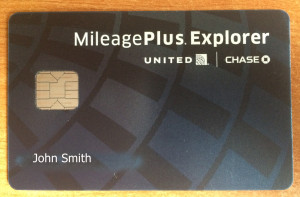
I started this blog post months ago. Well before the 2015 holiday season. Well after the October 1st deadline when all retailers were supposed to have installed the new chip payment card readers. And banks were to have sent them out to replace all magnetic stripe only credit and debit cards. These payment cards were supposed to ensure better security from point-of-sale data thefts like the 40 million credit cards compromised at Target terminals in 2013. When a new study came out this week about chip card compliance – I decided to update my original draft.
And incredibly – there’s not much to update. Because there’s not much compliance.
I was prompted to write about the chip cards originally because I couldn’t find any major retailer in my heavily populated part of New Jersey using them. It started with Ikea. Part of a huge international chain. I pulled out my new credit card with the embedded chip. “Have you activated the technology?” I asked the woman checking me out. “Not yet,” she said. Swipe it the old way.”
A few days later I bought a few things at my local Target. I recognized the chip card reader and asked again, “are you using the chip reader?” “Not activated yet,” the cashier replied. Target! Almost exactly 2 years after that huge data breach occurred. Another holiday season was nearly here — and nothing had changed. It wasn’t until well after the holidays that the chip card readers were finally working.
Last Saturday at my local Shoprite supermarket I asked, as I have each week since early October, if the chip card readers which have been there since then are working yet. You can guess what the answer was.
And it’s not just here in New Jersey. I was in northern Florida a few weeks ago. The cashiers at the chain retailers looked like I came from another planet when I asked if they were using the chip card yet.
I have hit a few stores where inserting the new card works. The Rite Aid stores for example. But the technology is buggy. You have to push the card all the way in until you hear a click. Then you have to wait. And wait. And wait while the sale is processed. I keep hearing dial up modem sounds in my head. At least I think they’re only in my head.
No federal agency seems to be enforcing the chip card deadline. Or the fines which were supposed to go with that deadline. And even at this late date — the major merchants and the big card-issuing banks seem to be doing a war dance around each other. You can forget about the small retailers. Some of them, like gas stations, have another year to comply anyhow.
Of course even if a store is actually using it’s new chip card reader – you’ll need the new payment chip card to use in it. I actually had to request a chip card replacement from the too-big-to-fail bank issuing one of my airline-branded credit cards. The bank was (and is) waiting until the card’s far ahead expiration date to replace my old magnetic strip card — and millions of others.
CNBC reports less than half of American businesses have adopted the chip card technology. Actually just 37 percent according to a Strawhecker survey.
One reason there seems to be no urgency is cost. The banks didn’t (and don’t) want to pay for new technology and the cost of replacing perfectly good payment cards. And the merchants don’t want either the cost or the hassle of dealing with new systems.
And there’s another problem. The most secure technology right now is called chip and PIN. It’s what Europe and much of the world uses. Instead of a signature with a credit card, the customer keys in a pin number — just as with debit cards. But here in the US the banks didn’t want to pay for another level of security. And the merchants have already spent billions to upgrade a system which cuts down only on basic card fraud. That helps banks which generally have to eat the charges run up on stolen credit cards. Chip and pin would help retailers stop fraud right at their terminals – which stores themselves themselves have to pay for – by making it easier to verify customers. And oh yes — while all this back and forth between banks and retailers has been going on — the banks have also raised the interchange fees they charge stores to hook up to their networks. Making merchants even less willing to buy into the chip-card system.
Bottom line – no one seems to be rushing to adopt the chip technology. And by the time they do – it may be outdated. At least one payment card system – MasterCard – is looking to replace passwords for on-line banking with selfies. How long before that or some other kind of facial recognition becomes the I.D. of choice at your local Walmart too?